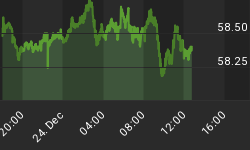Goldman Sachs continues to be bullish on oil despite the most recent market turbulence that saw prices plummet after reports that Saudi Arabia and Russia are discussing lifting the pact’s production by as much as 1 million bpd to address supply concerns.
The U.S. investment bank reiterated its forecast for Brent Crude at $82.50 in the third quarter this year, due to expectations that global demand growth will stay high even with Brent at $80, and that infrastructure constraints would delay record U.S. crude oil volumes to access the market.
“The current level of the market deficit, the robustness of the demand backdrop, and the rising levels of disruptions all set the stage for inventories to fall further,” Goldman Sachs analysts wrote in their recent report, as carried by Bloomberg.
At the beginning of this month, Goldman Sachs forecast that increased geopolitical tensions in the Middle East, plunging Venezuelan production, and the U.S. withdrawal from the Iran nuclear deal could push Brent Crude prices to $82.50 a barrel by the summer.
A couple of weeks later, Goldman warned that hedge funds and other money managers are wrong to bet against oil, after they started to reduce their record long positions in the six most important petroleum futures and options contracts.
Now Goldman looks unfazed by the growing talks of OPEC and Russia possibly easing the cuts to ‘stabilize’ the oil market and ‘ease consumer anxiety’. Related: Why Trading On Trump's North Korea Misstep Won’t Work
According to the investment bank, even if OPEC and allies increase production by 1 million bpd, this would only offset involuntary production declines. A gradual increase of those 1 million bpd would still result in an oil market deficit in Q3 2018, and plunging Venezuelan production and possible Iran supply disruptions would partially offset that 1-million-bpd increase, Goldman says.
“Historically, prices have declined after the announcement of OPEC production increases, however, when these occurred in a strong demand environment like today, prices were on average 8 percent higher than pre-announcement two months later,” Goldman analysts wrote.
By Tsvetana Paraskova for Oilprice.com
More Top Reads From Safehaven.com:

















